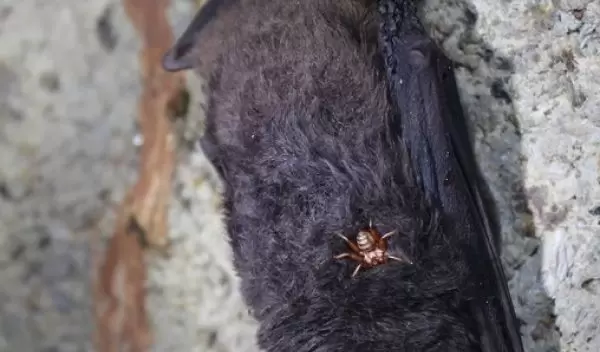
Bugs find bats to bite thanks to bacteria
Humans aren't the only animals that have to worry about bug bites. Thousands of insect species have evolved to specialize in feeding on mammals and birds, but scientists are still learning how these bugs differentiate between species to track down their preferred prey.
It turns out the attraction might not even be skin-deep: a U.S. National Science Foundation-funded study published in Molecular Ecology found evidence that blood-sucking flies specializing on bats may be locating their preferred hosts by following the scent of chemicals produced by bacteria on the bats' skin.
Holly Lutz, the paper's lead author, got the idea for the project from previous research showing that mosquitoes seem to prefer some people over others. "There is research to support the idea that the difference in mosquito attraction is linked to your skin microbiome - the unique community of bacteria living on your skin," says Lutz, a researcher at Chicago's Field Museum. "Keeping in mind that some people are more attractive to mosquitoes than others, I wondered what makes insects attracted to some bats but not others."
"How the flies actually locate and find their bats has been something of a mystery," adds Carl Dick, a scientist at the Field Museum and Western Kentucky University and one of the study's co-authors. "But because most bat flies live and feed on only one bat species, it is clear that they somehow find the right host."
It is an intricate, complex system with important parallels to other vector-borne pathways for disease transmission, scientists say, such as malarial and viral transmission among humans by mosquitoes. Previous research has shown that different bacteria species associated with skin or even the disease status of individual humans can influence feeding preferences of blood-seeking mosquitoes.


